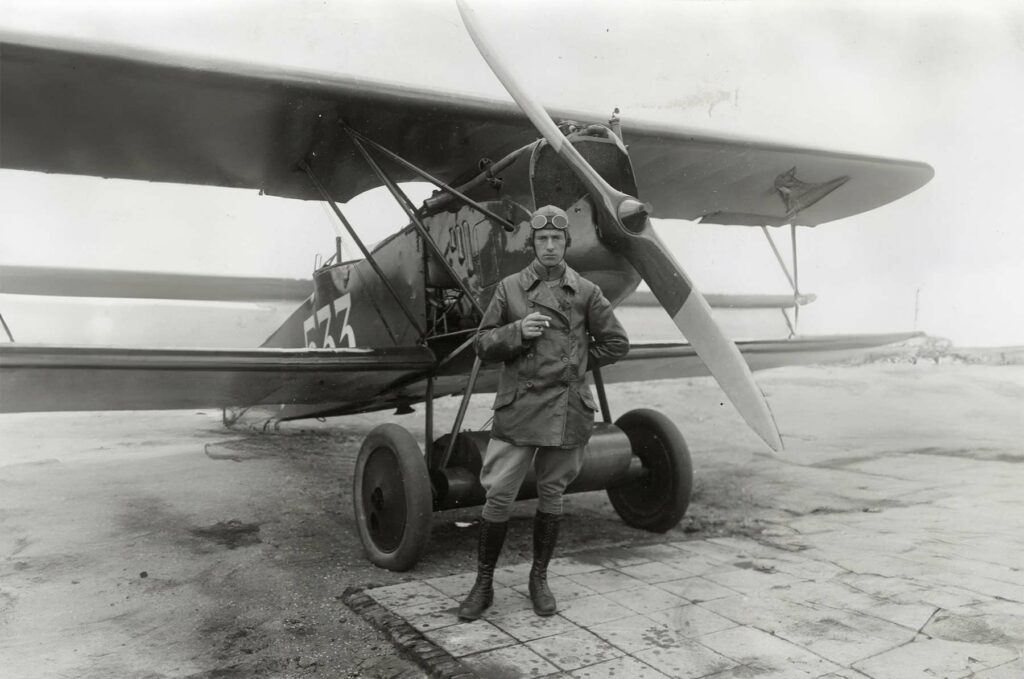The Fokker C.I was a versatile biplane reconnaissance and light bomber with a Mercedes D.IVa engine, characterized by its mixed construction and fixed landing gear. This article provides an in-depth look at the Fokker C.I, a reconnaissance aircraft developed in the aftermath of World War I by Anthony Fokker. It examines the historical context and objectives behind its development, its innovative design and performance specifications, and its military use and eventual phasing out. Through the C.I, Fokker’s design principles evolved, influencing post-war aviation and setting the stage for future military aircraft development.
In the wake of World War I, the aviation industry found itself at a crossroads. While the war had significantly accelerated aircraft technology, peacetime brought about new challenges and opportunities. The Fokker C.I represents this transitional period, where military aircraft began to adapt to more versatile roles.
History of the Development of the Fokker C.I:
The development of the Fokker C.I cannot be viewed in isolation from the epoch’s history. After World War I, Anthony Fokker, a Dutch aviation pioneer and entrepreneur, returned to his homeland. With the cessation of hostilities, there was a reduced demand for pure combat aircraft, prompting Fokker to adapt his wartime designs for peacetime uses.
The Fokker C.I was developed in 1918 as a reconnaissance aircraft that could also serve as a light bomber. The armistice and subsequent Treaty of Versailles restricted the production and development of military aircraft in Germany, so Fokker shifted operations to the Netherlands. The first prototype of the C.I flew in the spring of 1918, with further development continuing into the post-war years. There is no known NATO nickname for this aircraft, as it predated NATO’s establishment by several decades.
Designed to be an improvement over the older C.IV model, the C.I aimed to provide enhanced performance with a more powerful engine and improved aerodynamics. The versatility of the design was meant to help it adapt to a range of military tasks, from artillery spotting to light bombing runs.
Design of the Fokker C.I:
The design of the Fokker C.I echoed the mixed construction technique popularized by Fokker during the war. It featured a welded steel tube fuselage and wooden wings, both covered in fabric. This construction offered a good balance between strength and weight, a critical factor for aircraft of that era.
The aircraft had a length of 27 feet 6 inches (8.38 meters) and a wingspan of 39 feet 4 inches (11.99 meters). It stood at 9 feet 10 inches (3 meters) tall and had a typical empty weight of around 1,984 pounds (900 kilograms), with a maximum takeoff weight of approximately 2,888 pounds (1,310 kilograms).
One of the main advantages of the C.I was its robust design, which allowed for relatively easy maintenance and repair, crucial in the less-developed airfields of the time. However, the fixed undercarriage and the lack of advanced navigational aids were drawbacks in an era when aviation was rapidly progressing.
The C.I’s wing design was noteworthy, incorporating a cantilever structure without external bracing, which was ahead of its time. This reduced drag and allowed for better overall performance but made the wing construction more complex.

Performance of the Fokker C.I:
Powered by a Mercedes D.IVa 6-cylinder water-cooled inline engine, the C.I was capable of a maximum power output of 260 hp. This engine provided a top speed of around 118 mph (190 km/h), which was respectable for reconnaissance duties at the time.
The aircraft’s service ceiling reached approximately 19,685 feet (6,000 meters), and it had a range of 360 miles (580 kilometers), allowing for extended missions behind enemy lines or across the European countryside.
When compared to its contemporaries, the Fokker C.I was not the fastest nor the most heavily armed, but its reliability and ease of handling made it a valuable asset. Its performance was roughly on par with other reconnaissance aircraft of the era, such as the British DH.9.
Military Use and Combat of the Fokker C.I:
The Fokker C.I was armed with one or two 7.92 mm machine guns for the observer and sometimes carried a small bomb load for light attack missions. While it was designed too late to see service in World War I, the C.I found its niche in the post-war world.
The aircraft were used in various roles, including training, reconnaissance, and as a light bomber. Due to its robust design and the versatility of roles it could perform, the C.I was an attractive option for several countries’ air forces, including the Netherlands and the Soviet Union.
While it did not participate in large-scale conflicts, the C.I served during a period of significant unrest and military actions across Europe and played a role in policing actions and minor skirmishes.
Competing aircraft of the era included the aforementioned DH.9 and the French Breguet 14. The C.I’s use gradually declined as more advanced aircraft became available, and it was eventually phased out in favor of newer designs.
The last of the C.I aircraft were retired from active service by the late 1920s and early 1930s, replaced by aircraft such as the Fokker C.V and other more modern designs that incorporated advancements in aircraft technology.
The Fokker C.I stands as a testament to the ingenuity and adaptability of early aviation pioneers. It bridged the gap between wartime urgency and peacetime innovation, serving dutifully in a time of transformation. Though it was not the most advanced aircraft of its day, its contribution to military aviation paved the way for future developments and established Fokker’s reputation as a significant player in the aviation industry.
Back to the Spy Planes section.